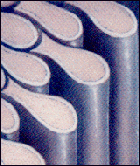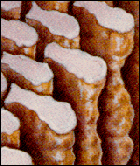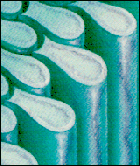
Dental Patient Education
|
Tooth Decay and Fluoride |
|
|
||||||||||||||||||
|
Tooth enamel is hard and porous. It consists of many closely-packed rods made of minerals. When you eat, acid forms on the outside of the tooth and seeps into the enamel's pores. This demineralization process can produce a weak spot in the tooth's surface. If unchecked, the enamel can decay and cause a cavity. Fluoride helps prevent tooth decay by slowing the breakdown of enamel and speeding up the natural remineralization process. These microscopic views of the tooth's chewing surface show how fluoride works:
Common sources of fluoride are fluoridated drinking water, toothpaste and mouth rinses. High-concentration fluoride gels, mouth rinses, drops and tablets are available by prescription When a weak spot on your tooth is detected, at-home fluoride treatments may be recommended to reverse the decay process. If the weak spot is left unchecked, a cavity may form, requiring a filling. If decay is allowed to spread, it may penetrate the root and enter the pulp (nerve) chamber, causing an abscess and requiring root canal treatment. Treatments
Use of fluoridated toothpastes and regular dental check-ups can help prevent tooth decay in the early stages. |
||||||||||||||||||
|
|
||||||||||||||||||
| © Copyright 1996 - 2008 HIVdent.org. All Rights Reserved. | ||





